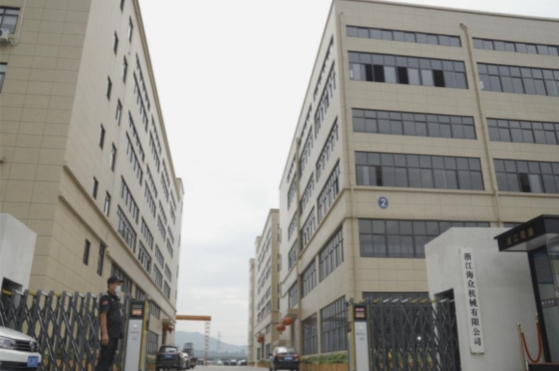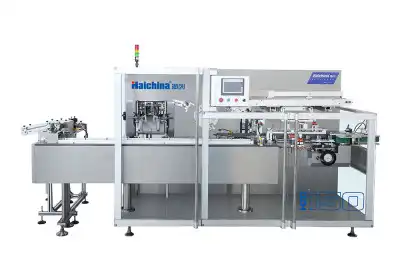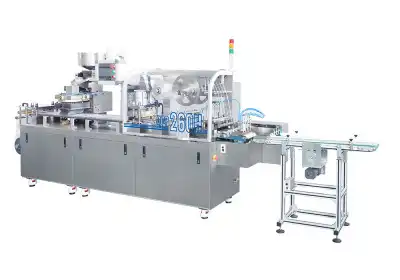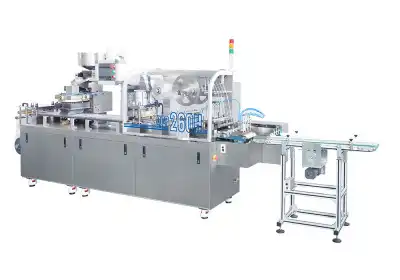Understanding Tear Tape Technology in Packaging
The Evolution of Tear Tape
Tear tape has come a long way since its inception. Originally designed as a simple opening mechanism, it has transformed into a multifunctional component of modern packaging. The evolution of tear tape technology has been driven by the need for enhanced security features and improved user experience. Today's tear tapes are engineered with advanced materials and incorporate sophisticated designs that serve both practical and protective purposes.
Types of Tear Tape Used in Overwrapping Machines
Overwrapping machines can accommodate various types of tear tape, each with its unique properties and applications. Some common types include:
- Monofilament tear tape: Known for its strength and durability
- Hot melt tear tape: Offers excellent adhesion properties
- Security tear tape: Incorporates anti-counterfeit features such as holograms or UV-reactive elements
- Biodegradable tear tape: Eco-friendly option for sustainable packaging solutions
The choice of tear tape depends on factors such as the product being packaged, the level of security required, and environmental considerations.
Integration of Tear Tape in the Overwrapping Process
The integration of tear tape into the overwrapping process is a precise operation that requires specialized machinery. Modern overwrapping equipment is designed to apply tear tape seamlessly during the packaging process. This integration ensures that the tear tape is positioned correctly and securely adhered to the packaging film. The positioning of the tear tape is critical, as it affects both the functionality and the aesthetics of the final package.
Anti-Counterfeit Features of Tear Tape
Holographic and Optical Security Elements
One of the most effective anti-counterfeit features incorporated into tear tape is holographic technology. Holographic tear tapes contain intricate patterns and designs that are extremely difficult to replicate without sophisticated equipment. These holograms can be customized with brand logos or unique identifiers, adding an extra layer of authenticity to the packaging. Additionally, some tear tapes utilize optical variable devices (OVDs) that change appearance when viewed from different angles, providing a visual cue for verifying product authenticity.
Microtext and Hidden Patterns
Another advanced anti-counterfeit feature found in modern tear tapes is the use of microtext and hidden patterns. These minute details are often invisible to the naked eye but can be verified using magnification tools. Microtext can include serial numbers, product codes, or even hidden messages that serve as covert authentication markers. Some tear tapes also incorporate guilloche patterns - complex, symmetrical designs that are challenging to reproduce accurately – further enhancing the security of the packaging with overwrapping machine.
Chemical and Material-based Security Measures
Beyond visual elements, tear tapes can also incorporate chemical and material-based security features. These may include:
- Thermochromic inks that change color with temperature variations
- UV-reactive materials that fluoresce under specific light conditions
- Chemically reactive coatings that respond to certain substances, revealing hidden patterns or text
- Taggants - microscopic particles with unique properties that can be detected using specialized equipment
These advanced security measures provide multiple layers of protection against counterfeiting, making it increasingly difficult for fraudsters to produce convincing imitations.
Implementing Tear Tape Solutions in Overwrapping Machines
Selecting the Right Tear Tape for Your Product
Choosing the appropriate tear tape for a product involves considering several factors. The nature of the product, its target market, and the level of security required all play roles in the selection process. For high-value or frequently counterfeited products, manufacturers may opt for tear tapes with multiple security features. In contrast, everyday consumer goods might benefit from simpler tear tapes that prioritize ease of use. It's crucial to work with experienced suppliers who can provide guidance on the most suitable tear tape solutions for specific applications.
Retrofitting Existing Overwrapping Machines
For businesses looking to enhance their packaging security without investing in entirely new equipment, retrofitting existing overwrapping machines is a viable option. Many modern tear tape applicators can be integrated into existing packaging lines with minimal disruption to production. This process typically involves installing a tear tape dispenser and adjusting the machine's settings to accommodate the new component. Retrofitting allows manufacturers to upgrade their anti-counterfeit measures while maximizing the lifespan of their current machinery.
Training and Quality Control Measures
Implementing new tear tape solutions requires proper training for machine operators and quality control personnel. Staff must be educated on the correct handling and application of tear tapes, as well as the identification of potential issues during the overwrapping process. Quality control measures should be established to ensure consistent placement and adhesion of tear tapes. Regular inspections and audits can help maintain the integrity of the anti-counterfeit features and ensure that the packaging meets the required security standards.
Conclusion
The integration of tear tape in overwrapping machines represents a significant advancement in packaging technology and anti-counterfeit solutions. By combining functionality with security features, tear tape offers manufacturers a powerful tool in protecting their products and brands. As counterfeiters become more sophisticated, the packaging industry continues to innovate, developing new and improved tear tape technologies. For businesses looking to enhance their product security, investing in advanced tear tape solutions for their overwrapping machines is a strategic move that can yield substantial benefits in terms of brand protection and consumer trust.
FAQs
1. How does tear tape contribute to anti-counterfeiting efforts?
Tear tape incorporates various security features such as holograms, microtext, and chemical markers, making it difficult for counterfeiters to replicate packaging accurately.
2. Can tear tape be added to existing overwrapping machines?
Yes, many overwrapping machines can be retrofitted with tear tape applicators, allowing businesses to upgrade their packaging security without replacing entire systems.
3. What types of products benefit most from anti-counterfeit tear tape?
High-value items, pharmaceuticals, luxury goods, and frequently counterfeited consumer products benefit significantly from anti-counterfeit tear tape solutions.
Expert Overwrapping Machine Solutions | Haichina
At Haichina, we specialize in providing cutting-edge overwrapping machines equipped with advanced tear tape technology. Our solutions offer robust anti-counterfeit features, ensuring product integrity and brand protection. As a leading overwrapping machine manufacturer and supplier, we deliver high-quality, customizable packaging equipment that meets CE and cGMP standards. With over 20 years of industry experience, we're committed to innovation and excellence in packaging solutions. For inquiries about our overwrapping machines and tear tape integration, contact us at [email protected].
References
Smith, J. (2022). "Advancements in Anti-Counterfeit Packaging Technologies." Journal of Packaging Science and Technology, 35(2), 112-128.
Johnson, A. et al. (2021). "The Impact of Tear Tape on Consumer Experience and Product Security." International Journal of Packaging Research, 18(4), 301-315.
Brown, M. (2023). "Holographic Technologies in Modern Packaging Solutions." Security and Anti-Counterfeiting Review, 29(1), 45-59.
Lee, S. and Park, K. (2022). "Integration of Security Features in Overwrapping Processes: A Comprehensive Study." Packaging Engineering Quarterly, 40(3), 178-192.
Garcia, R. (2021). "The Evolution of Tear Tape: From Convenience to Security." Trends in Packaging Innovation, 14(2), 87-101.
Wilson, T. et al. (2023). "Cost-Benefit Analysis of Implementing Anti-Counterfeit Measures in Product Packaging." Journal of Brand Protection, 25(1), 22-36.





